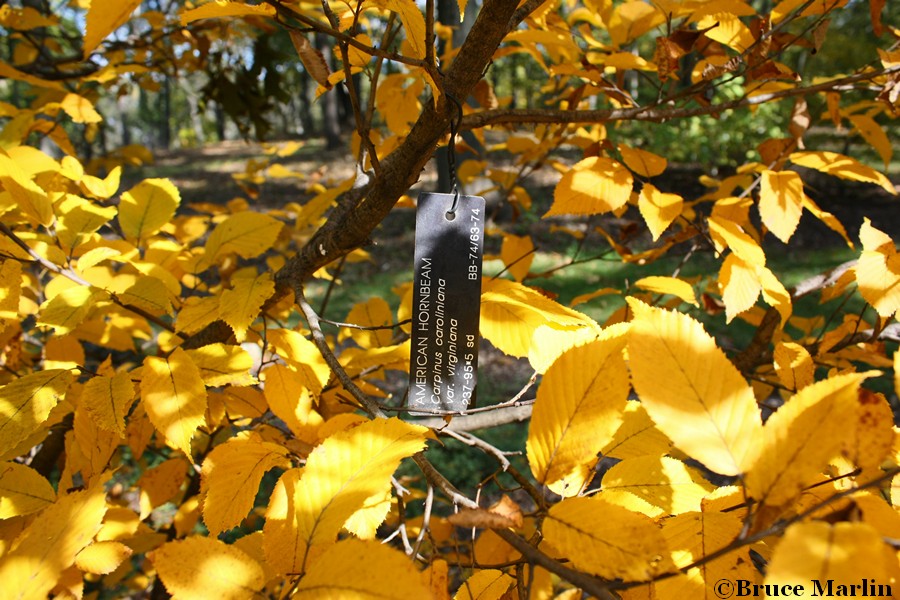American Hornbeam – Carpinus caroliniana
Family Betulaceae – Alder, Birch, Hornbeam
Grows rarely to 60 feet / Spread to 40 feet. This understory tree provides food for wildlife.
American Hornbeam originated in abandoned fields in North Carolina. It prefers wet, shaded sites and flourishes in the understory of various hardwood forests, along with witch hazel, dogwoods, serviceberries, and speckled alder. A small to medium sized tree, American hornbeam ranges across the eastern U.S. east of the Mississippi, from north Florida, to southern Maine, into Arkansas and eastern Texas.
Hornbeam is an important food source for squirrels, ruffed grouse, songbirds, ring-necked pheasants, bobwhite and turkey.

American Hornbeam in summer foliage is about 30 feet tall
Relatively few insects attack American hornbeam. Maple phenacoccus can form white cottony masses on the undersides of the leaves. Two-lined chestnut borer can cause dieback. Diseases: None are normally very serious. Several fungi cause leaf spots on Hornbeam. Leaf spots are not serious so control measures are usually not needed.
Canker caused by several fungi causes infected branches to dieback and entire trees die if the trunk is infected and girdled. Severely infected trees cannot be saved but infected branches are pruned out. Powdery mildew can cause a white powdery growth on the leaves, but the disease is not common on Carpinus. — from USDA Forest Service Fact Sheet ST-118
Family Betulaceae – Alder, Birch, Hornbeam
The birches have long been popular ornamental trees in North America, chiefly in the northern United States and Canada. Our specimens include river birch, Dahurian birch, paper birch, Arctic birch, Manchurian birch, Manchurian alder, downy birch, Japanese white birch, and 10 other species.
Tree Encyclopedia | Trees Index | Elms & Zelkovas | Birch Index

